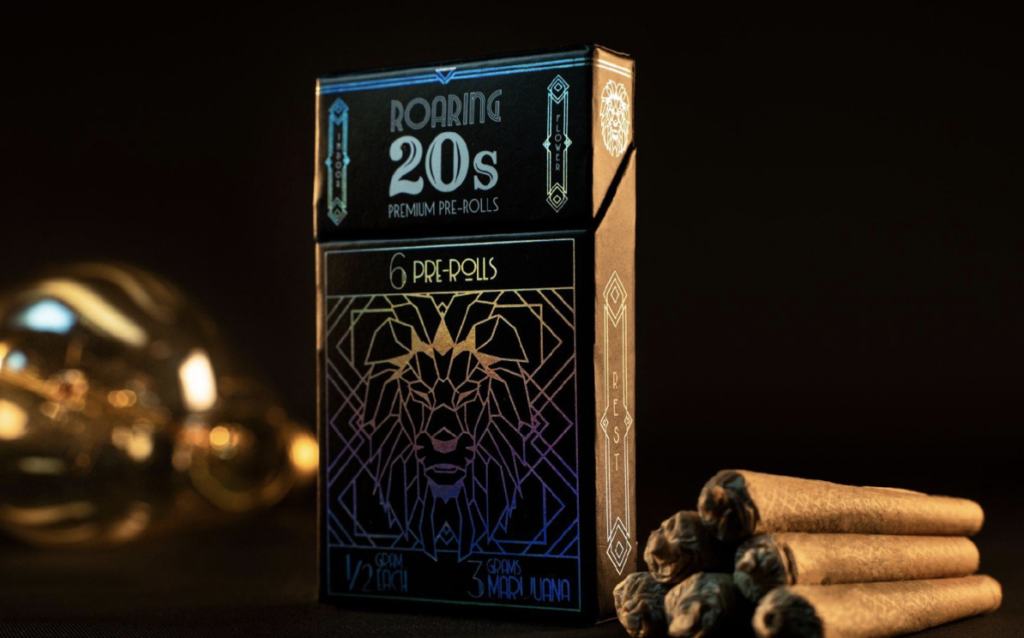By Justin Hermstedt
The popular imagination of the Roaring Twenties is pretty charming. It brings to mind a sense of independence and celebration. We picture scenes of champagne bottles popping, flapper girls dancing, and jazz musicians nodding along. But was it all good times and Gatsby?
Revisit the book outside of high school, and you’ll find The Great Gatsby to read more melancholic than the glamorous memory we’ve collectively conjured up.
A century later, we find ourselves in a new cultural revolution – the cannabis revolution. What would it mean for a product to carry the spirit of the 1920s, and what can we learn from this inflection point in cannabis history? Roaring 20s Prerolls are designed to seize the day through the lens of the past.
The cannabis industry today is certainly roaring. The market is frenzied and evolving, as new brands quickly rise and fall. Culturally, there is always cause for celebration. Some celebrate how legalization has liberated and grown the community. Some seem to celebrate how much money they’re making. Perhaps in a perfect world we’d all be doing both. The 1920s saw a similar appetite for excess, and exciting new ways to party. Single women began going out more, and Jazz musicians invigorated the nightlife with new sounds. In Jazz clubs, particularly in New Orleans, both the artists and audience were inspired by cannabis. It was an exciting time, and it’s made for a memorable aesthetic in history and pop culture.
Beneath the surface was an unspoken anxiety, an inkling of uncertainty that the party would last forever. The Great Depression arrived, and it was time to call it a night. Our party won’t last forever either. Cannabis isn’t going away, but some of the beautiful chaos will. Industry giants will emerge, companies will consolidate, and local, craft cannabis will settle into a smaller niche.
The Roaring Twenties are often depicted as a high before a crash, but the years prior to the 20s may be even more important to our understanding today. The events of World War I wrought devastation on a never before seen scale. Veterans returned maimed and traumatized. They had witnessed unspeakable tragedies. American society didn’t know how to process this, so we tried to move on. Don’t speak of the unspeakable. Try to have a good time.
The modern cannabis industry was born too from a traumatic past. Growers and consumers alike have been stigmatized at best, and persecuted at worst. The industry wouldn’t be what it is today without a century of innovation and activism. For every legacy grower who managed to break into the legalized industry, many more were left behind, or incarcerated.
It may feel bold to incorporate the story of illegal cannabis into your brand, but I believe there will always be a staying power to brands that embrace this history. A tumultuous path led us to the cannabis retail world as we know it, but it’s a palatable story to the first generation of legal cannabis shoppers. Many of them lived it, after all.
While looking to the past, we’re still entering a new year. New competitors, innovations, and trends await. No marketer should write these off. Designing a brand like Roaring 20s for instance, meant balancing a vintage look with a clear message: this is not your grandpa’s weed. Over 20% THC wasn’t exactly the standard a hundred years ago.
Your brand may be the latest entry in the rich history of cannabis in the United States. To market it is to tell your customers where and why you fit into the tapestry. I’ll always appreciate brands who tell this story with pride and humility, and I think the market will reward them.

